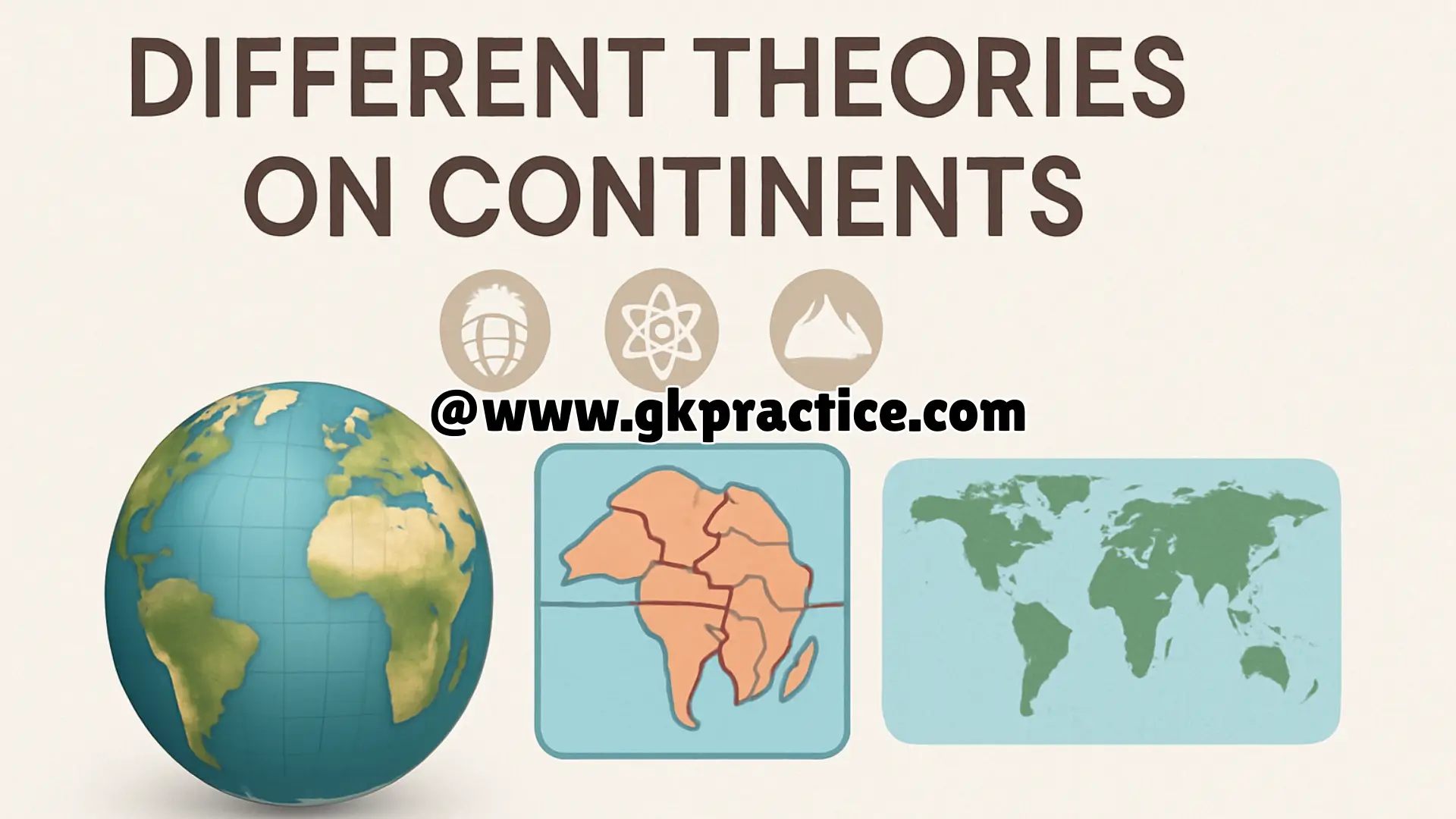Explore multiple-choice General Knowledge questions on Different Theories on Continents including Continental Drift, Plate Tectonics, Sea-Floor Spreading, and Fixist vs Mobilist concepts. Each question is provided with options, the correct answer, and a detailed explanation to boost your exam preparation.
Test Your Knowledge with These GK Questions on Different Theories on Continents:-
Q1) Which scientist proposed the ‘Continental Drift Theory’?
a) Alfred Wegener
b) Charles Darwin
c) Harry Hess
d) James Hutton
Explanation: Alfred Wegener proposed the Continental Drift Theory in 1912, suggesting that all present continents were once joined as a single landmass called Pangaea, which later drifted apart. His theory laid the foundation for modern plate tectonics.
Q2) The supercontinent proposed by Alfred Wegener was called:
a) Laurasia
b) Gondwana
c) Pangaea
d) Panthalassa
Explanation: Wegener suggested that about 200–300 million years ago, all the continents were joined in a giant landmass named Pangaea, which later broke apart due to continental drift. This was surrounded by a massive ocean called Panthalassa.
Q3) Which theory explains the creation of new ocean floors through seafloor spreading?
a) Plate Tectonic Theory
b) Continental Drift Theory
c) Contraction Theory
d) Expansion Theory
Explanation: late Tectonic Theory incorporates seafloor spreading, proposed by Harry Hess, showing that new crust forms at mid-ocean ridges and spreads outward. This supports continental movement and explains how continents shift over time.
Q4) Who proposed the ‘Seafloor Spreading’ Theory?
a) Alfred Wegener
b) Harry Hess
c) Tuzo Wilson
d) Charles Lyell
Explanation: In the 1960s, Harry Hess proposed the Seafloor Spreading Theory, explaining how molten material rises at mid-ocean ridges, creating new seafloor. This movement pushes continents apart and strengthened Wegener’s Continental Drift Theory.
Q5) The Plate Tectonics Theory became widely accepted during which decade?
a) 1920s
b) 1950s
c) 1960s
d) 1980s
Explanation: In the 1960s, evidence from oceanography, paleomagnetism, and seafloor spreading led to the acceptance of Plate Tectonics Theory. It unified earlier theories like continental drift and seafloor spreading into one comprehensive explanation of Earth’s crustal movements.
Q6) According to Plate Tectonics, Earth’s crust is divided into:
a) Continents only
b) Large rigid plates
c) Floating rocks
d) Single solid block
Explanation: The Plate Tectonics Theory explains that the Earth’s lithosphere is divided into rigid plates that move over the asthenosphere. These plates interact at boundaries, causing earthquakes, volcanic activity, and continental drift.
Q7) The “Contraction Theory” suggested continents formed due to:
a) Earth cooling and shrinking
b) Meteor impacts
c) Ocean expansion
d) Magnetic field shifts
Explanation: The outdated Contraction Theory stated that as Earth cooled, it shrank, causing the crust to wrinkle and form continents and mountains. Later, plate tectonics disproved this by providing better explanations for continental movements.
Q8) The “Expanding Earth Hypothesis” suggested what?
a) Earth’s radius was increasing
b) Continents were stationary
c) Earth was shrinking
d) Oceans were drying
Explanation: The Expanding Earth Hypothesis claimed that Earth’s volume was gradually increasing, causing continents to drift apart. However, lack of scientific evidence and modern satellite data disproved this theory in favor of plate tectonics.
Q9) Which theory is the most widely accepted explanation for continental movement today?
a) Contraction Theory
b) Expanding Earth Hypothesis
c) Plate Tectonics Theory
d) Continental Drift Theory
Explanation: Today, Plate Tectonics Theory is the most accepted explanation. It combines the concepts of continental drift and seafloor spreading, explaining that continents move because of the movement of lithospheric plates over the asthenosphere.
Q10) Who introduced the concept of “Hotspots” in Plate Tectonics?
a) Alfred Wegener
b) Tuzo Wilson
c) Harry Hess
d) James Dana
Explanation: J. Tuzo Wilson introduced the concept of hotspots, stationary points in the mantle where plumes of magma rise, creating volcanic islands like Hawaii. This helped explain plate movements and supported the plate tectonics framework.







